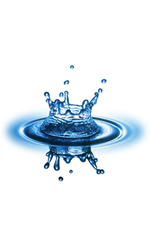Water Testing

Your water should be safe to drink and acceptable for all other household uses. In addition to illness, a variety of less serious problems such as taste, color, odor and staining of clothes or fixtures are symptoms of water quality problems.
Resources for Water Testing
- List of Available Tests with Pricing (shipping cost not included in listings)
- Household Water Quality
- Radon in Your Water
Routine tests for household wells, lead, nitrates, pesticides, minerals, pH and petroleum products are among the many tests that can be performed. Costs are dependent upon which test is selected.
It has been brought to our attention that the UGA lab is finding high uranium and radon in the well waters in Fayette County lately. Because of this finding, the following additional tests are recommended for Fayette County residents: W42 - Uranium and W44 - Radon. Click here to find out more on radon testing in your home and water.
It takes 7-10 business days from the time the lab receives the sample for results to be made available for most of our water and soil tests.
We accept water samples for testing in our office Monday - Friday, 8 am - 4:30 pm. There are no refunds.
PLEASE NOTE - During the holiday season there are times when the lab is closed resulting in longer than usual turnaround for results.
Frequently Asked Question
When should I collect water to submit for testing?
All water samples should be collected from the first draw of water out of the kitchen faucet or from the faucet used most often for drinking. A first draw water sample is collected (after a minimum of 6 hours, but not more than a 12-hour period) during which time there was no water usage from that faucet prior to sampling. Either early morning or evening upon returning home is the best sampling time to ensure a good sample.
In what should I collect the water? (Does not include Total Coliform/E. coli test)
We have bottles in the Fayette County Extension office to collect water samples however, you can also bring in at least 16 oz of water in a plastic bottle with a plastic top (throw away style is best). Please do not bring water samples in jars with metal lids.
How do I collect the water?
Place a clean plastic sample container below the faucet and gently open the cold water tap to fill sample bottle(s). At least 1 pint (500 mL) is needed for most samples.
I have well water. Which water test should I get?
The bacteria test (W35) is the only test that can tell whether the well water is safe to drink. This will test for E. coli and Total Coliform bacteria in your well.
Year 1 (initially) – a W2 (Georgia Expanded Water Test) and a W35 (Total Coliform E. coli test)/
Year 2 – W1 (Basic Water Test) and W35 (Bacterial)
Year 3 – W1 (Basic Water Test) and W35 (Bacterial)
Year 4 – Repeat cycle with A W2 (Expanded Water Test) and a W35 (Total Coliform /E. coli test)
How do I get the bacteria water test done on my well?
The W35 Total Coliform / E. coli test is a time-sensitive test, and you must come into the office and pick up a bacteria water test kit. The test kit is free however, you will have to include a $36 check in with the test kit when mailing to the UGA lab. Your water sample must be taken on a Monday or Tuesday. After you have taken a sample of your well water, you MUST ship the test kit Next Day Air via UPS or FEDEX. DO NOT ship via regular mail/Post Office. The $36 DOES NOT include the overnight shipping cost. The Fayette Extension office does not mail the bacteria water samples. This will be done by you.
How do I collect water from my well?
Draw the water from as near the well head as possible if you have concerns with your filtration system.
If you have concerns with your plumbing pipes and/or well, collect the water sample from your well head.
If these are not of any concern, the protocol is as follows:
1. Remove any faucet attachments such as filters, aerators, screens, splashguards, or water-saver valves.
2. Sanitize the faucet inside and out by dipping the faucet neck into undiluted chlorine bleach (do not use color-safe bleach).
3. Open tap fully and flush the faucet and pipes by running water for 3 minutes. If sampling from a faucet that mixes hot and cold water, run hot water for 3 minutes, then cold water for 3 minutes. Do not turn off the water but reduce the flow to avoid splashing.
4. Uncap the sample bottle without touching the inside of the cap or bottle, fill the bottle above the 100 mL line, but not completely full and recap. Please note that if testing for Bacteria and E.coli, there is a white substance in the test kit bottle. It is a dechlorinating agent. Fill the bottle only once; do not rinse.


























































